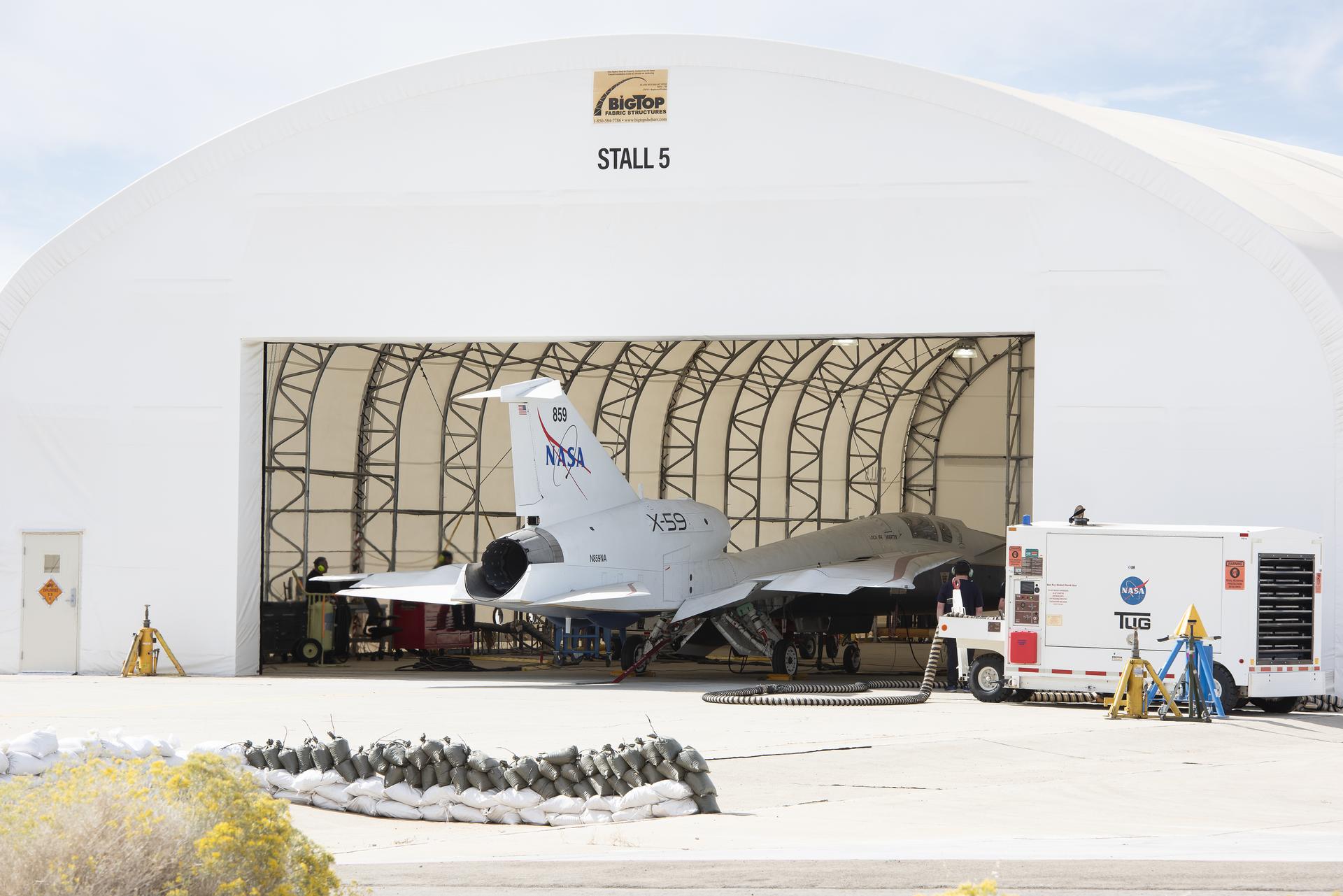NASA’s Quesst Mission: A Landmark Step in Quiet Supersonic Flight Testing
NASA’s Quesst mission has reached a pivotal point with the initiation of engine tests for the X-59, an experimental aircraft designed to fly faster than the speed of sound while minimizing the loud sonic booms traditionally associated with supersonic flight. These booms, often startling and disruptive, have led to bans on commercial supersonic flights over land. The X-59 aims to change this narrative by replacing the boom with a quieter “thump,” potentially opening the skies to faster air travel.
Commencement of Engine Tests
On October 30th, the X-59 team embarked on a series of engine-run tests to verify that the aircraft’s systems function cohesively when powered by its own engine. Prior to this, the X-59 had relied on external power sources. The successful completion of these tests is crucial as it sets the stage for the aircraft’s journey towards its inaugural flight.
The testing process is being executed in multiple phases. During the initial phase, the engine was rotated at low speed without ignition. This step was essential to check for leaks and ensure seamless communication among all systems. Following this, the team fueled the aircraft and began testing the engine at low power to confirm that both the engine and other systems aboard the aircraft operated smoothly, without any anomalies or leaks.
Jay Brandon, the chief engineer for NASA’s X-59, emphasized the importance of this phase by stating, “The first phase of the engine tests was really a warmup to make sure that everything looked good prior to running the engine. Then we moved to the actual first engine start. That took the engine out of the preservation mode that it had been in since installation on the aircraft. It was the first check to see that it was operating properly and that all the systems it impacted – hydraulics, electrical system, environmental control systems, etc. – seemed to be working.”
The Innovative Design of the X-59
The X-59 is a centerpiece of NASA’s Quesst mission, which aims to gather data on how people perceive the softer sonic thumps produced by the aircraft. This data could then be used by regulators to consider lifting the current restrictions on supersonic travel over land. The X-59’s engine, a modified F414-GE-100, is capable of generating 22,000 pounds of thrust, allowing the aircraft to reach speeds of Mach 1.4, equivalent to 925 miles per hour, at an altitude of around 55,000 feet. Uniquely, the engine is mounted on top of the aircraft, a nontraditional placement designed to contribute to the reduction of noise.
The engine runs are part of a comprehensive series of integrated ground tests that are critical to ensuring the safety and success of the mission. Given the complexity of these tests, the first flight of the X-59 is now anticipated in early 2025. The team will continue to work through these critical ground tests, addressing any technical challenges that arise with this unique experimental aircraft. A more precise date for the first flight will be determined as these tests are completed successfully.
Testing Phases and Future Prospects
Currently, testing is being conducted at Lockheed Martin’s Skunk Works facility in Palmdale, California. As the testing progresses, the team plans to run the aircraft at high power and perform rapid throttle changes, eventually simulating actual flight conditions.
Paul Dees, NASA’s deputy propulsion lead for the X-59, reflected on the significance of this phase, stating, “The success of these runs will be the start of the culmination of the last eight years of my career. This isn’t the end of the excitement but a small stepping stone to the beginning. It’s like the first note of a symphony, where years of teamwork behind the scenes are now being put to the test to prove our efforts have been effective, and the notes will continue to play a harmonious song to flight.”
Following the engine tests, the team will advance to what is known as aluminum bird testing. This stage involves feeding data into the aircraft under both normal and failure scenarios to assess its responses. Next, the team will conduct a series of taxi tests, where the aircraft will be set in motion on the ground. These tests are essential final steps before the aircraft is deemed ready for its first flight.
Implications of the Quesst Mission
The implications of NASA’s Quesst mission extend far beyond the realm of aviation enthusiasts. By potentially lifting the ban on supersonic flight over land, the mission could revolutionize air travel, significantly reducing travel times across continents. This advancement could not only enhance business travel but also bring distant destinations closer for tourists and families alike.
Moreover, the success of the X-59 could set a precedent for future aircraft designs, emphasizing the importance of reducing environmental and noise pollution. As cities around the world continue to expand, finding ways to minimize the impact of air travel on communities is increasingly crucial.
The Quesst mission also underscores the importance of collaboration between governmental agencies like NASA and private sector partners such as Lockheed Martin. This partnership harnesses the strengths of both entities, combining NASA’s research capabilities with Lockheed Martin’s expertise in aerospace engineering.
Conclusion
As the X-59 progresses through its testing phases, the world watches with anticipation. The potential to quiet the skies while restoring the dream of supersonic travel is a testament to human ingenuity and perseverance. NASA’s Quesst mission not only aims to transform the way we travel but also to inspire future generations of engineers, scientists, and dreamers to continue pushing the boundaries of what’s possible in aviation.
For more detailed information on NASA’s Quesst mission and the X-59, interested readers can visit NASA’s official website.
For more Information, Refer to this article.






























